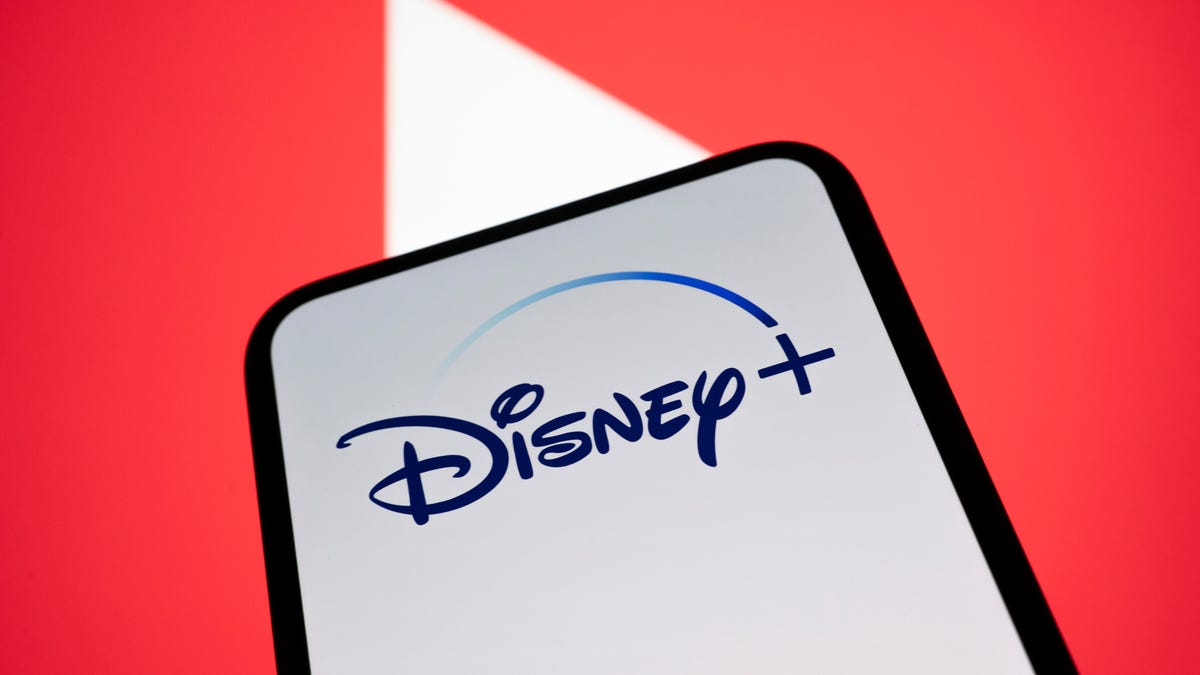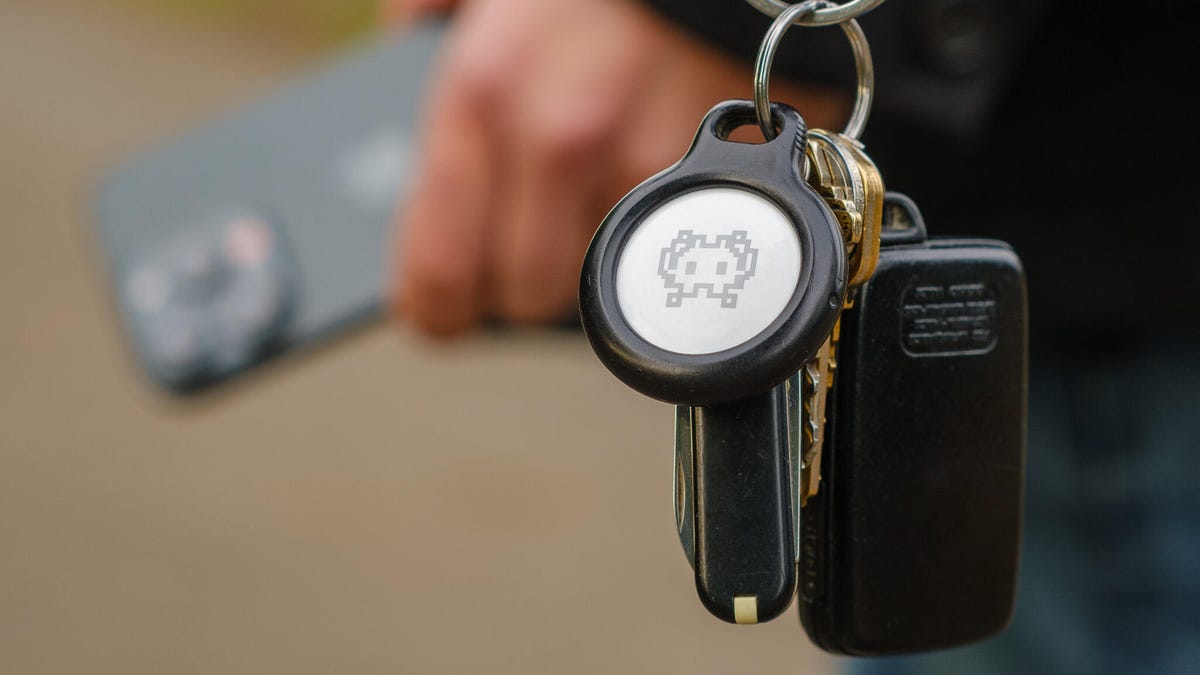Technologies
AOL Will Pull the Plug on Dial-Up Internet, 34 Years After Its Launch
This September we’ll see the end of an era in internet history.

Like TV screen static, a VHS tape rewinding, or a butter churn, the grating sound of AOL dial-up Internet will also soon be a thing of the past.
As simply stated on its support website, «Dial-up Internet to be discontinued.» The service will end Sept. 30 2025, at which point, «this service and the associated software, the AOL Dialer software and AOL Shield browser, which are optimized for older operating systems and dial-up internet connections, will be discontinued.»
That’s not good news for those folks still relying on dial-up, mainly in rural areas in the US and where broadband is not available. Data from the 2019 census revealed that 265,331 people relied solely on dial-up Internet.
The cacophony of beeps and whistles that accompanied dial-up Internet were an iconic sound from the dot-com boom of the 1990s.
Hopefully folks losing their dial-up will be able to access one of several alternatives: DSL (Digital Subscriber Line), cable, fiber optic (FTH), wireless internet (such as 5G) or satellite.
AOL ending its dial-up sparked a bunch of threads on Reddit, with many chatters surprised that dial-up still existed in this era of fast-speed Internet. On a thread, «AOL discontinues its dial-up internet, and we’re just surprised they even offered it in 2025,» many Redditers waxed nostalgic:
- «My parents switched to unlimited when I spent an entire night downloading the Batman and Robin trailer.»
- «My very first video download ever was Rob Zombie’s Never Gonna Stop. It took eight hours.»
- «Fascinating! The last time I used dial-up from AOL was in 1999 on the Greek island of Rhodos.»
- «My first modem had rubber couplers to put a physical phone handset into.»
- «Ah the memories of not being able to use phone because Limewire [was] running lol.»
Technologies
Today’s NYT Mini Crossword Answers for Saturday, Nov. 15
Here are the answers for The New York Times Mini Crossword for Nov. 15.

Looking for the most recent Mini Crossword answer? Click here for today’s Mini Crossword hints, as well as our daily answers and hints for The New York Times Wordle, Strands, Connections and Connections: Sports Edition puzzles.
Need some help with today’s Mini Crossword? The Saturday puzzle is always the longest of the week, so it’s not quite as easy as the other days. Today’s wasn’t too terrible. Read on for the answers. And if you could use some hints and guidance for daily solving, check out our Mini Crossword tips.
If you’re looking for today’s Wordle, Connections, Connections: Sports Edition and Strands answers, you can visit CNET’s NYT puzzle hints page.
Read more: Tips and Tricks for Solving The New York Times Mini Crossword
Let’s get to those Mini Crossword clues and answers.
Mini across clues and answers
1A clue: Theatrical role
Answer: PART
5A clue: Capital of Vietnam
Answer: HANOI
6A clue: Father of a «fur baby»
Answer: CATDAD
7A clue: Words often accompanied by a ring
Answer: MARRYME
8A clue: Whirling currents
Answer: EDDIES
9A clue: Put up, as a statue
Answer: ERECT
10A clue: Race that’s about half the length of a half-marathon
Answer: TENK
Mini down clues and answers
1D clue: SpongeBob’s starfish friend
Answer: PATRICK
2D clue: Despite it all …»
Answer: ANDYET
3D clue: Wanders here and there
Answer: ROAMS
4D clue: Company with a «To Go» stain remover
Answer: TIDE
5D clue: Become firm
Answer: HARDEN
6D clue: Small group of soldiers
Answer: CADRE
7D clue: What parallel lines never do
Answer: MEET
Technologies
Touchdown! Disney, ESPN and Other Channels Are Back on YouTube TV
YouTube TV subscribers no longer need another streaming service — or to visit a sports bar — to watch the NFL or college football.

YouTube TV subscribers, your channels — and your football — are back. Disney and YouTube said Friday night that the two companies had reached an agreement. YouTube TV subscribers lost all of Disney’s channels, including ESPN and ESPN2, on Oct. 30. Those who wanted to watch NFL or college football on ABC, ESPN or ESPN2 or Disney family-friendly hits such as Bluey, had to find other alternatives.
«We’re happy to share that we’ve reached an agreement with Disney that preserves the value of our service for our subscribers and future flexibility in our offers,» a YouTube spokesperson said. «Subscribers should see channels including ABC, ESPN and FX returning to their service over the course of the day, as well as any recordings that were previously in their Library. We apologize for the disruption and appreciate our subscribers’ patience as we negotiated on their behalf. «
Don’t miss any of our unbiased tech content and lab-based reviews. Add CNET as a preferred Google source.
The companies said in a statement that they reached a multi-year deal and were already restoring the channels to YouTube TV.
According to YouTube, subscribers should see content and saved recordings restored over the next 24 hours. So if you don’t have them back yet, they should show up soon.
I’m a YouTube TV subscriber myself, and as of 5:30 p.m. PT on Friday, Disney, ESPN and other channels have been restored for me. As a die-hard Minnesota Vikings fan (yes, I know), I added Fubo TV temporarily, but I won’t be keeping that subscription.
According to the statement, the deal will include the restoration of the channels, plus other items. The unlimited version of ESPN’s new direct-to-consumer service will now be made available at no additional cost to YouTube TV subscribers. Subscribers will also have access to a selection of live and on-demand programming from ESPN Unlimited inside YouTube TV. Also, select networks will be included in various genre-specific packages, and there will be the ability to include the Disney Plus Hulu Bundle as part of select YouTube offerings.
«This new agreement reflects our continued commitment to delivering exceptional entertainment and evolving with how audiences choose to watch,» Disney Entertainment Co-Chairmen Alan Bergman and Dana Walden and ESPN Chairman Jimmy Pitaro said in the statement. «It recognizes the tremendous value of Disney’s programming and provides YouTube TV subscribers with more flexibility and choice. We are pleased that our networks have been restored in time for fans to enjoy the many great programming options this weekend, including college football.»
Disney-owned channels were pulled on Oct. 30 when the agreement between the two companies expired.
According to The Hollywood Reporter, the resulting 25-day blackout was the longest in recent memory for Disney.
Here’s a full list of the channels that were removed due to the dispute:
- ABC
- ABC News Live
- ACC Network
- Baby TV Español (Spanish Plan)
- Disney Channel
- Disney Junior
- Disney XD
- ESPN
- ESPN Deportes (Spanish Plan)
- ESPNews
- ESPNU
- ESPN2
- Freeform
- FX
- FXM
- FXX
- Localish
- Nat Geo
- Nat Geo Mundo (Spanish Plan)
- Nat Geo Wild
- SEC Network
Technologies
How to Get the Most Out of Apple AirTags: A Comprehensive User Guide
Apple’s tiny trackers have become invaluable additions for travel as well as keeping tabs on everyday items. Here’s how to make them work best for you.

The last thing you want to deal with when traveling is lost luggage. In the past, you were at the mercy of the overburdened airlines to find a missing bag, but that’s all changed now. I consider Apple AirTags essential everyday items — small enough to stash in a bag or purse, battery life you can forget about for months and able to give you peace of mind when something goes missing, even if that’s just your keys inside the house.
Apple’s portable Bluetooth trackers are quickly becoming nearly ubiquitous. They’re so popular that major airports and airlines are now plugged in to Apple’s Find My service and can help you pinpoint a bag that could be wending its way through an airport’s luggage system or was left behind where you started your trip.
I already use Apple’s Find My service to keep tabs on devices, such as the iPad I frequently leave in my living room, as well as where family members are via their iPhones. For other items like my keys and everyday bag, I’ve come to rely on several Apple AirTags that fit into or onto almost anything I want to track. Apple’s tracker depends on the crowdsourced Find My network to help you pinpoint your items, from keys you’ve misplaced at home to a bag you may have left in the office.
Here’s all you want to know about AirTags. For more, learn about why you shouldn’t put an AirTag on a pet and discover five unexpected places to stash an AirTag.
What’s an Apple AirTag?
An AirTag is an individual tracking device that securely broadcasts its location using Bluetooth wireless networking. It’s a small glossy white puck not much larger than a US quarter and about the height of three stacked coins. A CR2032 coin cell battery keeps the AirTag powered for roughly a year.
Once the AirTag is paired with an iPhone or iPad, you can essentially forget about it. Hang it on a keychain or drop it into a bag —anything you want to be able to track or find later.
How much do AirTags cost and where can I buy them?
A single AirTag retails for $29 direct from Apple, and can be bought for around $24 from most outlets that sell electronics.
However, it’s always more economical to buy AirTags in packs of four — once you find a use for a solitary AirTag you’ll soon think of other things you want to track. Apple sells the set for $99 and some retailers, such as Amazon
, Best Buy and Walmart, have them for around $75, bringing the per-item cost down below $20. AirTags are also frequently reduced for big sales such as Black Friday and Prime Day.
If you do order from Apple, you can engrave initials, numbers and emoji for free, which can help you tell the AirTags apart (or just add a personal spin).
Is it difficult to set up a new AirTag?
In typical Apple fashion, activating a new AirTag is easy. Initially, a plastic tab slipped in between the electronics and battery keeps the AirTag inert. Once you pull that tab and the pieces make contact, the AirTag starts broadcasting its presence. When you bring it close to an iPhone or iPad, a dialog box appears, giving you the option to connect the AirTag.
When you tap Connect, choose a description of what the tag will be associated with, such as «Handbag» or «Luggage»; you can also enter a custom name. Choose an emoji to represent the AirTag in the Find My app and tap Continue. The AirTag is linked to your Apple ID.
How do I locate an AirTag?
In the Find My app on your iPhone, iPad or Mac, tap the Items button to view the AirTags you’ve activated. On an Apple Watch, open the Find Items app.
Tap the item you want to locate. If you think it’s close by, the easy option is to tap the Play Sound button, which makes the AirTag emit a high-pitched trill. However, if you have an iPhone 11 or later (not counting the iPhone SE), tapping Find uses the iPhone’s Ultra Wideband (UWB) chip to locate the AirTag with more precision —not just estimating the distance, such as «1.5 ft nearby,» but also point you in the right direction as you move around.
If the item is not in your general vicinity, the Find button becomes a Directions button that will hand off the location to the Maps app for driving, walking, transit or cycling routes.
What if I forget items while I’m heading out?
Being able to find something I’ve lost is invaluable, but it would be better if I didn’t forget it in the first place. For every AirTag, you can enable Notify When Left Behind, an option that sends a notification if you and an AirTag that was with you are no longer together.
That could be as simple as forgetting a bag at a restaurant or — more alarming —if someone swiped the item and is making a getaway.
What’s the secret to how AirTags work?
You know how in many thrillers and spy movies someone plants a tracker on a person and is then able to pinpoint the target’s location no matter where they are? That always seemed far-fetched to me — what sort of range would a tiny piece of electronics have, really? — but an AirTag is essentially that.
The AirTag itself does not have that sort of range, but it has something better: millions of devices carried by Apple customers surrounding it. On a regular interval, the AirTag sends out a low-power Bluetooth signal containing an encrypted ID. Any nearby iPhone, iPad or Mac picks up the signal, adds its location coordinates (if it knows them) and sends that to Apple servers in a secure background transmission.
That’s how, when my luggage chose to spend an extra day in Europe without me, I knew it was still in the airport in France. Likely an iPhone owned by a traveler or employee picked up the ID of the AirTag in my bag and relayed that to Apple. When I opened the Find My app on my iPhone in Seattle, it queried the servers and presented the AirTag’s last known location.
All of this happens in the background — no personal information is sent, and the impact to the relaying device’s performance and battery is negligible.
What about privacy? Can a hidden AirTag track me?
Just as you can use an AirTag to track your personal objects, it is possible that someone could drop an AirTag into your bag or coat pocket to try to track your movements. Apple has put a few safeguards in place to try to prevent that type of situation.
If your iPhone or iPad detects an unknown AirTag in your vicinity that is persistently near you, a notification appears that says «AirTag Found Moving With You.» When you ransack your belongings and find it, open the Find My app on your iPhone or iPad, tap Items and then tap Identify Found Item. Place the AirTag against the back of the device at the top until you see a notification. When you tap that, you’re taken to a web page with the tag’s serial number and, optionally, contact information.
If it turns out a family member’s AirTag fell out of a bag, no worries. If it’s one that’s unfamiliar, you can follow instructions for how to disable the tag.
For more, see how to protect yourself from being tracked.
What if I suspect that my AirTag is stolen?
You’ve looked everywhere, used the Find feature to scan for it, but your item containing an AirTag is nowhere to be found. Now what?
In the AirTag’s details in the Find My app, scroll down to Lost AirTag and tap Show Contact Info. If someone finds the tag and checks it as described just above, you can have a phone number or email displayed, plus an optional message, when they look up its information.
The other option is to choose Share Item Location, which creates a link you can send to someone identifying where the tag is. The link is active for just one week, which is hopefully more than enough time to let someone track it down. For example, suppose your bag is swiped: You could give the shared link to the police so they can track it down. (For safety reasons, don’t confront someone who’s stolen your property.)
When the item and its AirTag are returned, a notification appears that you’ve been reunited. Or, you can make the tag’s whereabouts hidden at any point by tapping Stop Sharing Item Location in the same screen, which invalidates the shared link.
How can I share an AirTag with someone I trust?
An AirTag is linked to your Apple Account, but for years that presented a problem: AirTags assigned to other people in my household would trigger the «AirTag Found Moving With You» warning — not great on family trips when we’d take my wife’s car.
Now, fortunately, it’s possible to share an AirTag’s location with up to five people. Tap a tag in the Find My app and under Share AirTag tap Add Person. Tap Continue on the screen explaining what will happen, then select a contact and tap Share.
In that person’s Find My app, they can accept the shared item. Note that all people you add can track the location.
How long does the battery last and how do I replace it?
In my experience, the CR2032 coin battery in each AirTag lasts about a year. When the level dips below about 10% remaining, you’re alerted that the battery is low and a red indicator appears in the Find My app.
To replace the battery, turn the silver back counter-clockwise to release its latches. Lift the existing battery out and replace it with a new one, making sure the battery’s identifying markings are facing you. Then align the tabs of the metal portion with the slots in the plastic piece, press lightly and turn clockwise. The AirTag will chirp when the electronics and battery are securely in contact.
Can I use AirTags with an Android phone?
AirTags are not directly compatible with Android phones — there’s no app that ties into Apple’s Find My network. To get the same tracking functionality, look into the Chipolo One Point tracker that uses Google’s Find My Device network.
Apple once offered an Android app called Tracker Detect that would let you identify a found AirTag, but that’s not available for newer Android devices — an app with that name in the Google Play store is from a separate developer. However, for phones with NFC chips installed, you can place a found AirTag against the back of the device to view information about it.
For more, learn about this year’s best AirTag accessories and everything about Apple Intelligence.
-

 Technologies3 года ago
Technologies3 года agoTech Companies Need to Be Held Accountable for Security, Experts Say
-

 Technologies3 года ago
Technologies3 года agoBest Handheld Game Console in 2023
-

 Technologies3 года ago
Technologies3 года agoTighten Up Your VR Game With the Best Head Straps for Quest 2
-

 Technologies4 года ago
Technologies4 года agoBlack Friday 2021: The best deals on TVs, headphones, kitchenware, and more
-

 Technologies4 года ago
Technologies4 года agoVerum, Wickr and Threema: next generation secured messengers
-

 Technologies4 года ago
Technologies4 года agoGoogle to require vaccinations as Silicon Valley rethinks return-to-office policies
-

 Technologies4 года ago
Technologies4 года agoOlivia Harlan Dekker for Verum Messenger
-

 Technologies4 года ago
Technologies4 года agoiPhone 13 event: How to watch Apple’s big announcement tomorrow
